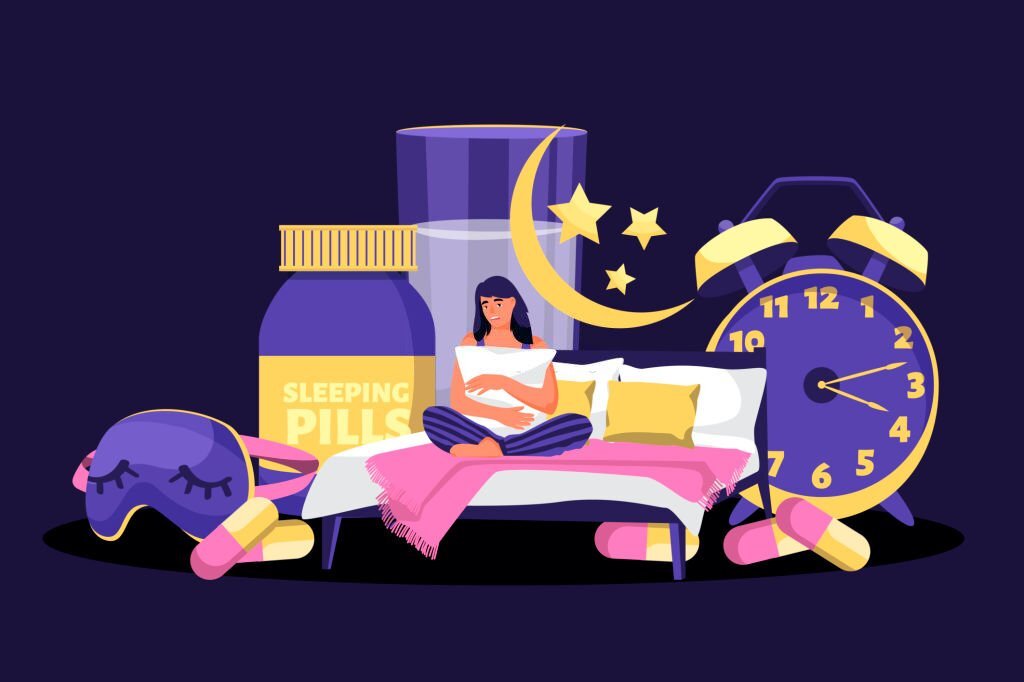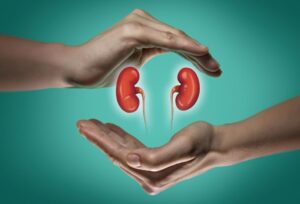What Is Insomnia?
Insomnia, at its core, is a sleep disturbance characterized by persistent difficulties in either falling asleep, remaining asleep, or waking up prematurely without the ability to return to sleep. More than just sporadic restless nights, it’s an ongoing challenge where the tranquility of slumber remains elusive, often leading to daytime repercussions such as fatigue, impaired focus, and mood fluctuations. This condition can stem from many reasons, including lifestyle stress and underlying health issues. Whether transient or chronic, insomnia impacts overall well-being and demands attention and understanding.
Prevalence and Demographics Affected by Insomnia:
Insomnia, the persistent struggle to fall or stay asleep despite ample opportunity, is not an isolated condition. Its tentacles reach far and wide, encompassing various demographics. A look into its prevalence and the populations it touches reveals its ubiquitous nature.
- Global Reach: Globally, insomnia symptoms are estimated to affect 10% to 30% of the adult population, with a subset of these individuals experiencing severe or chronic forms of the disorder. This prevalence suggests that insomnia isn’t just a personal issue but a public health concern.
- Age Dynamics: Children and Adolescents: Contrary to popular belief, insomnia isn’t exclusive to adults. Approximately 25% of children experience some form of sleep disturbance, which can affect their cognitive development, behavior, and overall health. Factors like school pressures, screen time, and even early school start times contribute.
- Adults: The incidence of insomnia increases with age. While younger adults report difficulty falling asleep, older adults struggle with early morning awakenings. Menopause, medical conditions, and age-related changes in sleep architecture often influence this demographic.
- Elderly: Among the elderly, 40-50% report insomnia symptoms. With advancing age, factors such as increased medication use, chronic illnesses, and reduced deep sleep phases come into play.
- Gender Disparities: Women are almost twice as likely to experience insomnia than men. Hormonal fluctuations, particularly during menstrual cycles, pregnancy, postpartum, and menopause, are pivotal in sleep disruptions. Furthermore, societal roles, with women often juggling multiple responsibilities at home and work, contribute to increased stress and resultant sleep disturbances.
Definition and Types of Insomnia:
Insomnia, a term often casually thrown around in everyday conversations, is more intricate than just “having trouble sleeping.” As our understanding of sleep medicine has evolved, so has our comprehension of insomnia and its multifaceted nature. Let’s delve deeper into what insomnia entails and explore its various types.
- Defining Insomnia: At its core, insomnia is a sleep disorder characterized by persistent difficulty in falling asleep, staying asleep, or waking up too early and not being able to return to sleep. For these disturbances to qualify as insomnia, they must occur despite adequate opportunity for sleep and result in daytime impairment or distress.
It’s worth noting that the mere dissatisfaction with sleep quality or quantity, without the associated daytime impairments, doesn’t necessarily constitute insomnia.
Types of Insomnia:
The categorization of insomnia is generally based on its duration and potential causes:
1.) Acute Insomnia (Short-term Insomnia)
Duration: Typically lasts a few days to a few weeks.
Causes: Often arises from life events or situations, such as stress from an impending work presentation, excitement about an upcoming event, or receiving unsettling news. It might also emerge from environmental factors, like sleeping in an unfamiliar place or jet lag.
Resolution: Acute insomnia often resolves without treatment once the triggering factor subsides.
2.) Chronic Insomnia:
Duration: Defined by sleep disturbance that occurs at least three nights per week and persists for at least three months.
Causes: This form can arise from a myriad of factors, including:
Chronic Medical Conditions: Diseases like chronic pain syndromes, asthma, or acid reflux can lead to recurrent sleep disturbances.
Mental Health Disorders: Anxiety, depression, or bipolar disorder can cause persistent insomnia.
Substance Use: Over-reliance on caffeine, alcohol, or other stimulants can lead to chronic insomnia.
Poor Sleep Habits: Irregular sleep schedules, stimulating activities before bed, or an unsuitable sleep environment can contribute.
Resolution: Addressing the root cause is pivotal. Non-pharmacological methods, like Cognitive Behavioral Therapy for Insomnia (CBT-I), and medications might be employed for treatment.
3.) Onset Insomnia:
Description: Difficulty falling asleep at the beginning of the night.
Causes: This can be triggered by acute stress, poor sleep environment, or certain medical or psychiatric conditions.
4.) Maintenance Insomnia:
Description: Characterized by frequent or prolonged awakenings during the night or waking up too early.
Causes: Factors range from medical conditions that cause discomfort, psychiatric disorders, aging, or poor sleep habits.
5.) Comorbid Insomnia:
Description: Insomnia that coexists with other medical or psychiatric conditions but isn’t directly caused by them.
Differentiation: Even when the coexisting condition improves, the insomnia might persist, necessitating separate treatment.
Underlying Causes of Insomnia: Digging Deeper into Sleep’s Elusive Nature
While many view sleep as a universal and straightforward activity, the reality is quite the opposite. Sleep is a multifaceted process influenced by numerous factors. Insomnia, a prevalent sleep disorder, embodies this complexity, often stemming from many underlying causes. Let’s delve into these contributors to understand why so many people find restful sleep out of reach.
Medical Conditions: Several medical conditions can either disrupt sleep directly or produce discomfort that makes falling or staying asleep challenging:
Chronic Pain: Conditions such as arthritis, fibromyalgia, or persistent headaches can make it hard to find a comfortable sleeping position or lead to awakenings during the night.
Gastrointestinal Issues: Disorders like gastroesophageal reflux disease (GERD), or ulcers can cause nighttime pain or discomfort.
Respiratory Diseases: Asthma or chronic obstructive pulmonary disease (COPD) can cause breathlessness that interrupts sleep.
Neurological Conditions: Parkinson’s disease or restless legs syndrome (RLS) may result in nighttime awakenings or difficulty falling asleep.
Endocrine Problems: Hyperthyroidism, where the thyroid gland is overactive, can cause symptoms resembling anxiety that lead to insomnia.
Depression and Anxiety: Both conditions can lead to hyperarousal, making it difficult to relax and fall asleep. Conversely, insomnia can exacerbate the symptoms of these disorders, creating a vicious cycle.
Stress: Worries about work, family, health, or finances can keep the mind active at night, hindering sleep onset.
Post-Traumatic Stress Disorder (PTSD): Traumatic events can lead to nightmares or night sweats that disrupt sleep.
Bipolar Disorder: Manic episodes can result in decreased need for sleep.
Lifestyle and Environmental Factors: The way we lead our lives and the environments we inhabit can either be conducive to sleep or disrupt it
Alcohol and Caffeine: While alcohol can help induce sleep, it interferes with the REM stage, leading to fragmented sleep. Caffeine, a stimulant, can delay the onset of sleep if consumed later in the day.
Nicotine: Nicotine can cause difficulty falling asleep.
Irregular Sleep Schedule: Changing sleep patterns or frequently switching between day and night shifts can disrupt the body’s internal clock.
Poor Sleep Environment: An environment that’s too hot, cold, noisy, or bright can hinder sleep. Even factors like an uncomfortable mattress or pillows can be culprits.
Heavy Meals Before Bed: Eating large or spicy meals can cause discomfort due to indigestion, making sleeping challenging.
Medications: Several drugs can interfere with sleep, including:
Antidepressants can cause insomnia, while others might lead to excessive drowsiness.
Blood Pressure Medications: Certain antihypertensives can lead to frequent nocturnal awakenings.
Stimulants: Prescribed for conditions like ADHD, these can make falling asleep difficult.
Corticosteroids: Used for conditions like asthma or arthritis, these can disrupt sleep patterns.
Histamine H2 antagonists: Used for GERD or peptic ulcers, some can cause insomnia or nightmares.
Innovative Approaches to Insomnia Treatment:
In our fast-paced world, sleep is both a luxury and a necessity. For those battling insomnia, each night can seem like an endless struggle. But there’s hope on the horizon. While traditional remedies have their place, many innovative treatments are now designed to combat this age-old ailment. This article delves into both time-tested and groundbreaking approaches to treat insomnia.
Cognitive Behavioral Therapy for Insomnia (CBT-I):
A frontline treatment, CBT-I addresses the thoughts and behaviors that hinder sleep. It combines a variety of strategies, including sleep restriction and stimulus control, to rebuild a healthy sleep pattern.
Relaxation Techniques:
Techniques such as progressive muscle relaxation, deep breathing exercises, and biofeedback help reduce the physical symptoms of anxiety, promoting sleep.
Sleep Hygiene Education:
Sleep hygiene education can significantly improve sleep quality by teaching good sleep habits—like maintaining consistent bedtimes, creating a conducive sleep environment, and limiting screen time before bed.
Pharmacological Treatments:
Examples include zolpidem (Ambien), eszopiclone (Lunesta), and ramelteon (Rozerem). These are often prescribed for short-term use due to concerns about dependency and side effects.
Over-the-counter Sleep Aids:
Antihistamines, such as diphenhydramine, are available without a prescription. However, they can cause side effects like dizziness and prolonged drowsiness.
Melatonin and Melatonin Agonists:
Melatonin, a hormone that regulates sleep-wake cycles, can be used to treat certain types of insomnia, particularly related to circadian rhythm disorders. Agonists like ramelteon mimic melatonin’s effects.
Antidepressants:
Some antidepressants have soothing properties and can be prescribed for insomnia, especially when comorbid with depression.
Alternative and Complementary Therapies
Herbal Supplements
Valerian Root: Some studies suggest it might improve sleep quality, though the evidence is mixed.
Chamomile: Often consumed as a tea, chamomile has mild sedative effects.
Acupuncture: Traditional Chinese medicine has employed acupuncture to treat insomnia, with some finding relief through this holistic approach.
Aromatherapy: Scents like lavender and chamomile have been associated with relaxation and improved sleep quality.
Technological Solutions
Sleep Apps and Wearables: Modern tech offers tools to monitor and improve sleep. From tracking sleep stages to producing white noise, these devices and apps can be invaluable aids.
Light Therapy: Especially effective for circadian rhythm disorders, exposure to bright light at specific times can help reset the internal body clock.
Emerging Therapies
Neurofeedback: By training individuals to control their brainwave patterns, neurofeedback might offer a cutting-edge solution to insomnia.
CBD (Cannabidiol): Preliminary research indicates that CBD might have therapeutic potential for sleep disorders, though more studies are needed.
Last Words:
Insomnia is more than just an occasional restless night. It’s a persistent issue that can drastically impact every facet of our lives. Fortunately, it can be managed with the right strategies and professional guidance. Recognizing the signs and taking proactive steps towards better sleep habits can pave the way for restful nights and energized days.
Disclaimer: This article is informational and not intended as medical advice, diagnosis, or treatment. Always consult with a qualified healthcare professional regarding any medical conditions or concerns you may have. Individual results may vary, and the information presented in this article should not be considered as a substitute for professional medical expertise or treatment.





